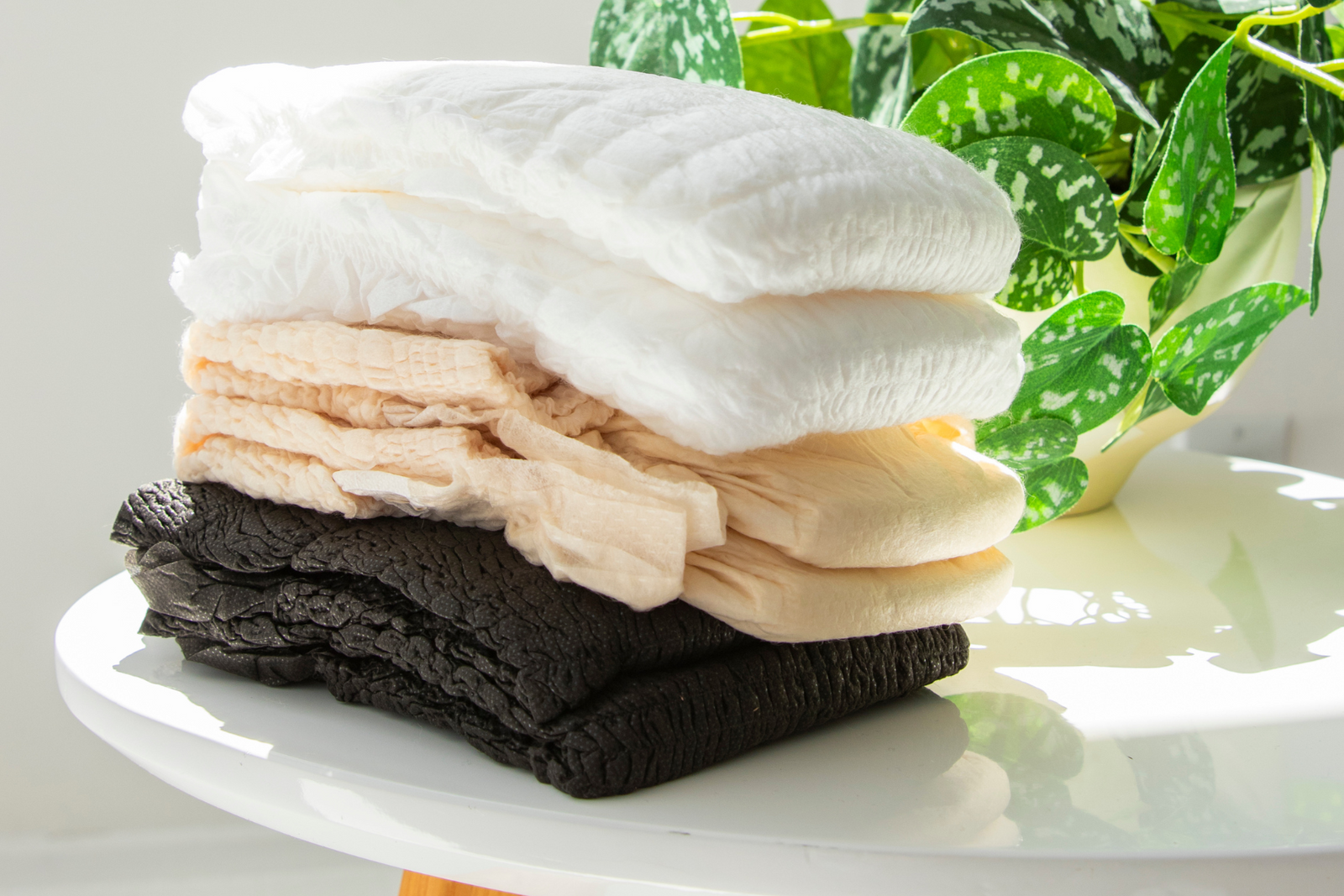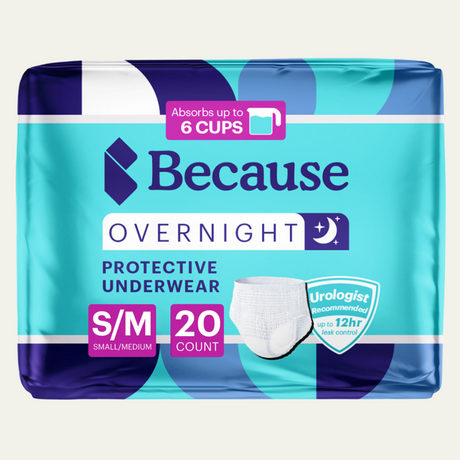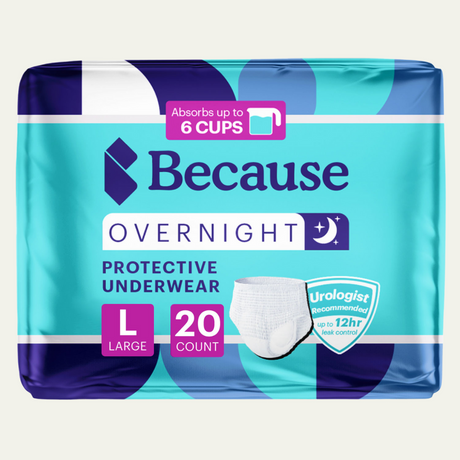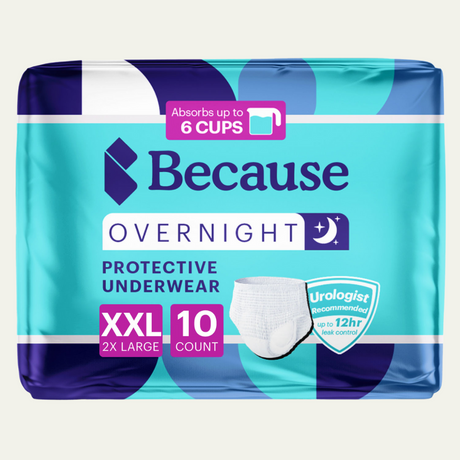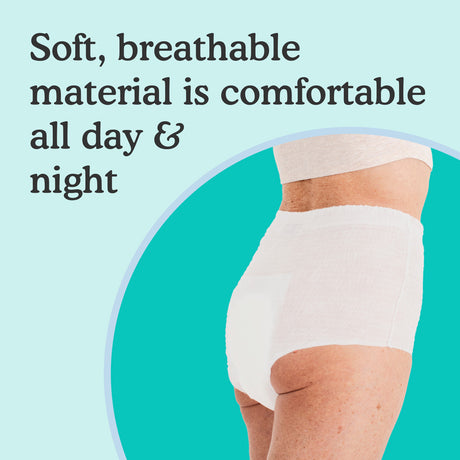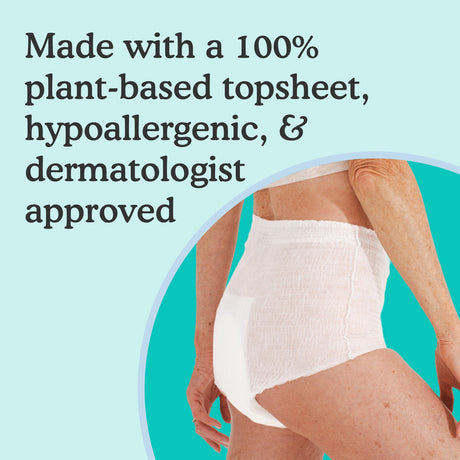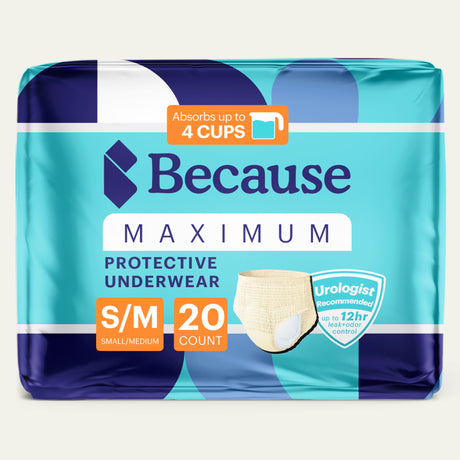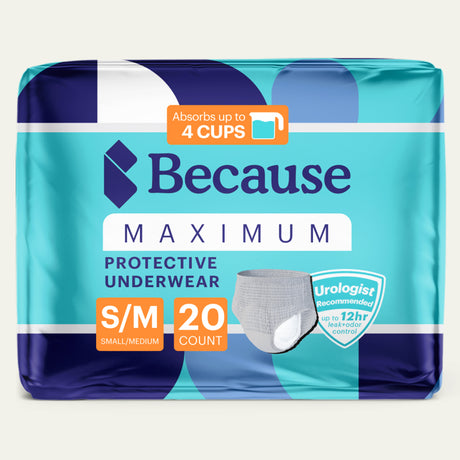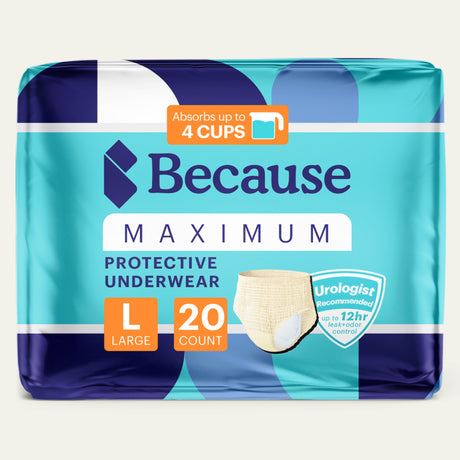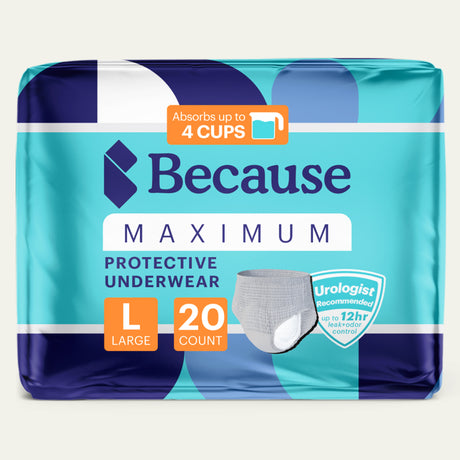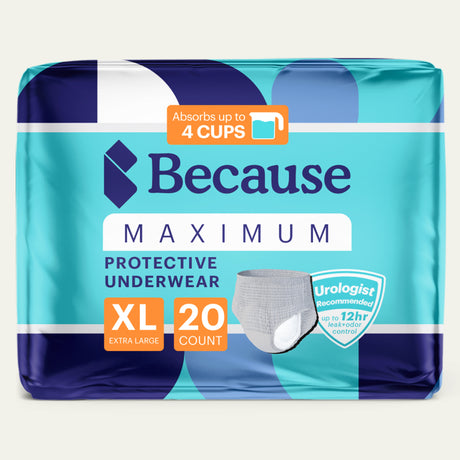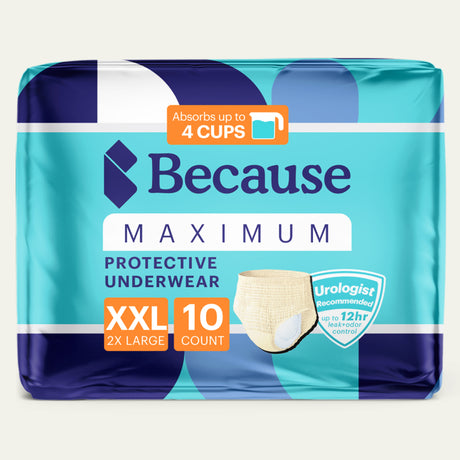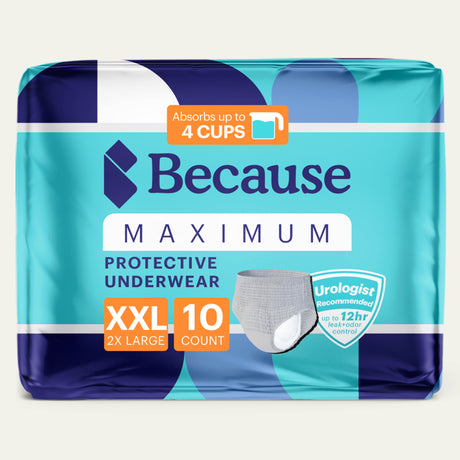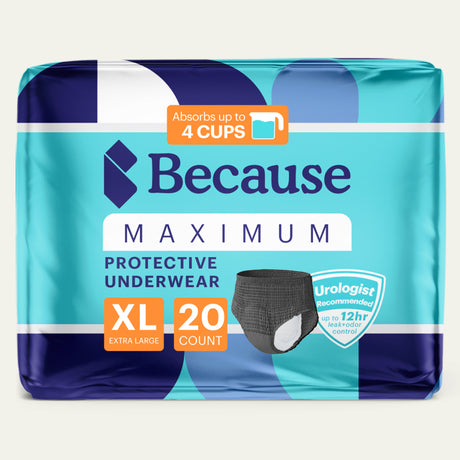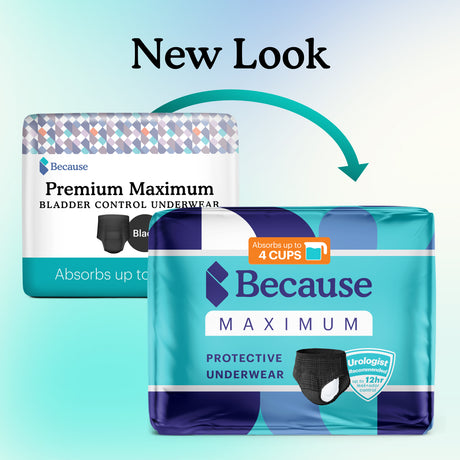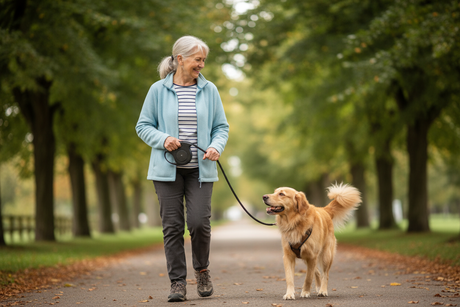Incontinence is more common than many might think, yet it remains a topic people are hesitant to discuss. For those living with it, the challenges go beyond the physical aspects, often involving emotional hurdles and societal stigmas. While managing incontinence can be daunting, finding the right products, like adult diapers, can bring a sense of control and comfort.

How Common is Adult Incontinence?
Adult incontinence is far more common than many realize. Globally, urinary incontinence affects approximately 423 million adults. A survey conducted between 2015 and 2018 found that 61.8% of women have experienced urinary incontinence at some point in their lives. If you’re dealing with bladder leaks, it's likely that others around you are, or have been, in the same situation—though it often goes unspoken.
How to Talk about Incontinence & Incontinence Products
Discussing bladder leaks can feel overwhelming, especially when incontinence is rarely spoken about openly. Many individuals experience shame or embarrassment surrounding their symptoms, which often prevents them from seeking help. However, the first step toward managing incontinence is talking to a healthcare professional.
On average, women wait 6.5 years and men 4.2 years before consulting a doctor about incontinence. Despite the valuable support healthcare professionals can offer, many still hesitate due to feelings of embarrassment or misconceptions. Some believe their incontinence is their fault, while others assume nothing can be done to help. Both of these beliefs are untrue. Incontinence is often a treatable condition, and seeking a proper diagnosis from your doctor is the critical first step toward finding relief.
But don’t just take our word for it, Anja, a member of our private support group for women with incontinence says,

Similarly, Jono, a member of our private support group for men says,

How to talk about incontinence with your doctor:
- Bring a detailed account of your symptoms: When do your leaks occur? Is it during physical activity, while you’re asleep, or at other specific times? Do you experience a strong urge to go, or do leaks happen unexpectedly without warning? Tracking these details will provide your doctor with important insights and help them accurately diagnose the type and cause of your incontinence.
- Bring a list of questions you have: Doctors' appointments can feel rushed, and it’s easy to forget key concerns in the moment. Prepare a list in advance, covering topics like treatment options, at-home management strategies, or over-the-counter methods. This will ensure you address everything you need to know about managing your condition.

How to talk about incontinence with your loved ones:
If you’re dealing with bladder leaks, seeking support from your loved ones can be invaluable. However, discussing incontinence can bring up feelings of embarrassment or shame. It’s essential to remember that your family and friends care about your well-being and will likely want to help you feel comfortable and supported.
Darcy, a member of our women’s support group reminds us, “Tell those who are important to you. It reduces internalized shame. Having a medical issue is not a character flaw.”
When talking with them, share as much or as little detail as you feel comfortable with about your symptoms, and explain that you are facing a new health issue and could use their support. Be clear in how they can assist you—whether you're seeking emotional support, someone to accompany you to appointments, or help with researching products and finding a doctor. Your loved ones might not know how best to help, so providing specific examples will make it easier for them to offer meaningful support tailored to your needs.
Here are some ways your loved ones can help support you:
- Be a listening ear
- Help research products such as absorbent underwear, pads, underpads, boosters, and more
- Accompanying you to appointments or helping you research specialists in your area
- Helping you find support groups in your community or online
- Adjusting activities to accommodate increased bathroom breaks or access to public facilities
- Help carrying extra supplies or a change of clothes when you go out in case of emergency
Regarding Workplace Accommodation
In certain instances, incontinence may qualify as a disability under the Americans with Disabilities Act (ADA), which allows you to request reasonable accommodations from your employer with legal protection. These accommodations could range from increased bathroom breaks and the option to work from home to having an office or desk located closer to the restroom, or additional time off for medical appointments. If you’re navigating incontinence in the workplace and seeking support, knowing your rights can be empowering. For further details on how incontinence may fall under disability protections, check out this blog.
What it’s Like to Live with Incontinence
Living with incontinence is a unique experience for each individual. Some people manage daily leaks, while others may only encounter occasional episodes. For some, full bladder voids necessitate heavy absorbency products, while others deal with lighter dribbles that can be managed with pads or guards.
The key to successfully managing incontinence is developing a routine that works for you. Start by identifying triggers, assessing the frequency and severity of your leaks, and finding the right products that meet your needs. Once you establish a consistent approach and have the right support system in place, you’ll be able to manage incontinence more effectively on a daily basis.
Some items to consider when determining how to plan for your bladder leaks are:
- Do I need heavy protection or is light protection enough?
- Am I at risk for needing a change of clothes? If so, where might I need to keep a change of clothes? (Car, at work, in a purse, etc.)
- Do I have other considerations when it comes to what product to buy? (sensitive skin, mobility issues, etc.)
Not sure which bladder protection product is right for you? Try our starter pack, a $14 value, for just $2.99!

Accessibility challenges
Access to public restrooms can vary greatly depending on where you live. In urban areas, some establishments may allow you to use their facilities, especially if you make a purchase, but in rural settings, restrooms may be few and far between. This makes it essential to carry spare supplies with you whenever you leave the house. Having backup products on hand, such as extra pads or underwear, is a key part of managing incontinence and ensuring you feel prepared and comfortable no matter where you go.
Costs
In the U.S., individuals spend over $20 billion annually on managing urinary incontinence alone—excluding those also dealing with fecal incontinence. Incontinence care is costly, and the expenses go beyond just purchasing diapers, pads, and personal care products. People living with incontinence often face increased visits to specialists, additional medications, and a range of medical tests, all of which contribute to the financial burden.
For products alone, 35% of people report spending between $50-100 per month, 29% spend $100-200, and 27% spend over $200 monthly on incontinence supplies. On the medical side, insurance copays for specialists typically range from $15-25 per visit, but without insurance, those visits average around $265—without factoring in the cost of necessary tests.
While Medicaid may offer coverage for incontinence products, they are not currently covered under Medicare, leaving many to shoulder the cost themselves.

Health effects
Living with bladder and/or bowel leaks can increase the risk of developing other health issues, including urinary tract infections, skin infections, and other vaginal infections. One common condition is Incontinence-Associated Dermatitis (IAD) which occurs when the skin is exposed to prolonged contact with urine or feces. This can irritate and weaken the skin barrier, leading to inflammation and discomfort.
To prevent IAD, it's essential to maintain a thorough skin care routine. Clean the affected area promptly and apply a barrier cream to protect the skin from moisture. These proactive measures can help reduce irritation and prevent further complications.
The Need for Awareness Around Adult Incontinence
Today, the stigma and shame surrounding incontinence often prevent individuals from seeking the help they need. Many mistakenly believe that incontinence is a normal part of aging or an issue that must simply be endured. These are myths; incontinence is a treatable condition that deserves attention and care. With advancements in treatments and ongoing research, numerous options are available, even if previous attempts have been unsuccessful.
You don’t have to live with bladder leaks any longer. Reach out to your doctor today to explore new treatments and find the right solution for your needs. Embrace the opportunity for improved comfort and quality of life—help is available, and you don’t have to face this challenge alone
More Advice from Members of Our Support Groups
“First of all, you are not alone. Many people, including young people, experience some level of incontinence. Second, there are many products today that allow you to do the things you enjoy. Get some samples and find out which products work best for you and go out and enjoy life.” -Darin
“For those who are completely urine incontinent and traveling. Put a pad inside your Depend [adult diaper/incontinence underwear/bladder leak underwear]. While traveling, replace the pad and use the depend as backup.”-Eric
“Finding what works for you is key. Try different products like diapers or pull-ups until you find something comfortable. Once you do, stick to a solid routine for changes and hygiene. Always plan ahead by carrying extras, just in case. Confidence is everything—most people won’t notice or care about what’s under your clothes. They're too focused on their own lives. If you're comfortable, talking to friends or a support group like this can help you feel less alone.” -Curran
“Do NOT decrease your daily water intake throughout the day. Perhaps as evening approaches it might be ok in order to help to decrease frequency or volume during hours of sleep, but it is so important to keep those urinary toxins diluted.”- Joyce (for more on dehydration & incontinence click here!)
“Whatever product you use for moisture protection, test it. Put it on and stand in the shower, pee into the pad or diaper. Does it hold? If so, let this test give you some confidence for when you are out and about.” -Eric
“Do not think you are alone. Many women are dealing with this.”-Annette
“Try to overcome the shame you are experiencing. This is a medical issue, not a shortcoming of yours, and not your fault. Use the incontinence pads or panties or diapers and don’t worry overmuch what others will think. It’s unlikely they will even notice!” -Lisa
“Sometimes you will have the urge to pee and you know you cannot make it. Just remember, it's okay if you bring the bathroom to you.” -Kathryn
“Once I had found diapers that I could trust my life, more or less, returned to normal. I tried every sample possible of different makes and sizes until I was happy. This took a while but it was worth it.” -Allan
“Tea, will unfortunately, make it worse. And you make have to break some societal conventions to get by -- like using the facilities (outdoors), stocking duplicate black leggings, having absorbent wipes or a squeegee in your purse to clean up. Don't use my name.” (For more on food and drink that can impact your incontinence, check out this blog!)
“Join this group! There is so much information here and you can take it in as you are ready.” -Iris
Interested in joining our private support groups?
Join our Women’s Incontinence Support Group
Join our Men’s Incontinence Support Group
Adult incontinence is a prevalent yet often overlooked issue that affects millions worldwide. The challenges associated with incontinence extend beyond physical discomfort, intertwining with emotional struggles and societal stigma. However, it's vital to recognize that help is available and that seeking support is a crucial step in managing this condition effectively.
Awareness is key. By opening the conversation around incontinence, we can diminish the shame and misconceptions that often surround it. Individuals experiencing bladder leaks should not feel isolated or embarrassed; instead, they should understand that they are part of a larger community facing similar challenges. With the right products, professional guidance, and a supportive network of loved ones, it is possible to regain control over daily life and improve overall well-being.
If you or someone you know is struggling with incontinence, don’t hesitate to reach out for assistance. Consult a healthcare professional, explore available treatments, and consider connecting with support groups. Together, we can break the silence surrounding incontinence and empower individuals to seek the care and comfort they deserve.
Sources:
Septa, M. (2023, Jul. 24). How Much Does Incontinence Cost? Aeroflow Urology. https://aeroflowurology.com/blog/how-much-does-incontinence-cost
